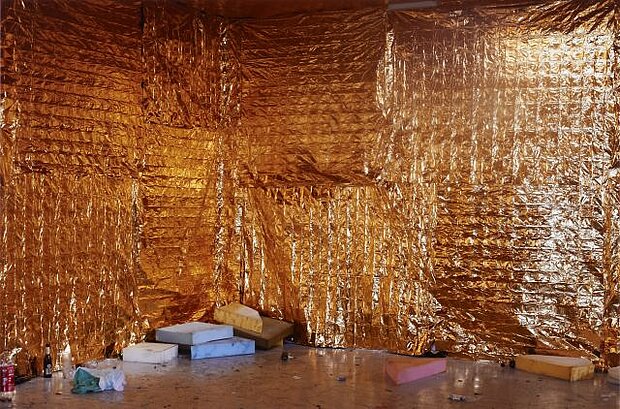
Tillmans, Wolfgang
studio party (b)
2009

© mumok
| Object description | C-print |
|---|---|
| Object category | sculpture |
| Dimensions |
Objektmaß:
height: 30,5 cm,
width: 40,6 cm
Rahmenmaß:
height: 34 cm,
width: 44,2 cm,
depth: 2,5 cm
|
| Year of acquisition | 2012 |
| Inventory number | G 1317/0 |
| Creditline | mumok - Museum moderner Kunst Stiftung Ludwig Wien, erworben mit Unterstützung des mumok Board |
| Rights reference | Tillmans, Wolfgang |
| Further information about the person | Tillmans, Wolfgang [GND] | Tillmans, Wolfgang [ULAN] |
The studio party is over. Cigarette butts, empty beer bottles, and foam blocks are spread around the floor. This is that ubiquitous sense of the “morning after” that comes after parties. Can you remember parties like these? And the next day? The floor where you danced is sticky, cold cigarette smoke lingers in the air, there is a smell of sweat and beer. No one is dancing now. The music has been turned off and all the guests have left. At first sight, all the glistening gold in this room is confusing. The walls are covered with gleaming emergency blankets that still bear traces of their packaging. In the daylight, they make the room seem to glow gently. During the party all the bright lights were reflected on these blankets, transforming the studio into a glittering dance hall. The 2009 work “Studio party (b)” by German photographer Wolfgang Tillmans is one of a series of works in which the studio is no longer shown as a creative retreat, but as a party space. Artistic inspiration, you might say, is not to be found in quiet places on the margins of society, but right in the middle of the music scene and youth culture. In the 1990s Tillmans became known for his photographs for the British lifestyle magazine “I-D.” He was seen as the chronicler of the London rave scene, even if he himself said: “My work is not a documentation of the youth in the 1990s, it is crossing of lines of the enacted and the found.”
© mumok – museum moderner kunst stiftung ludwig wien